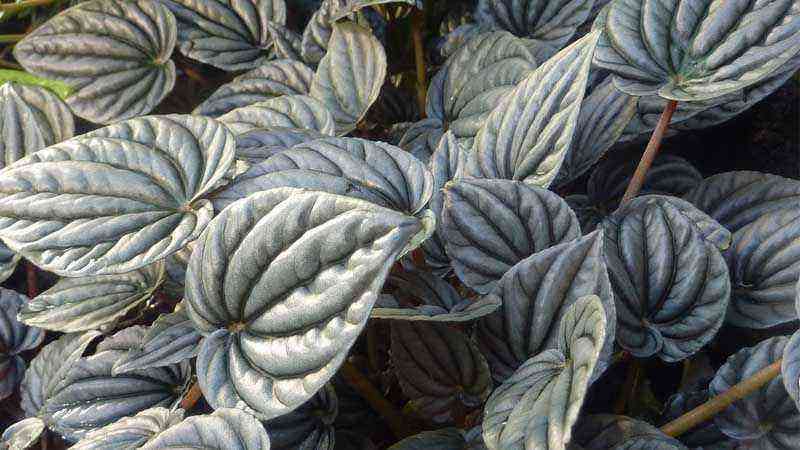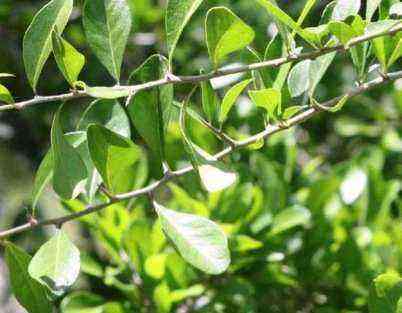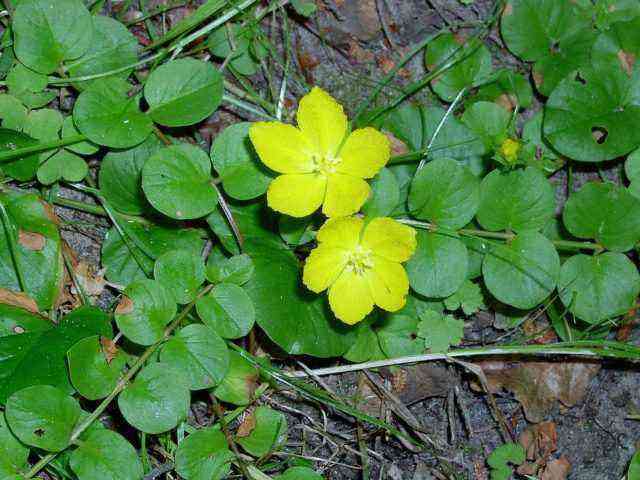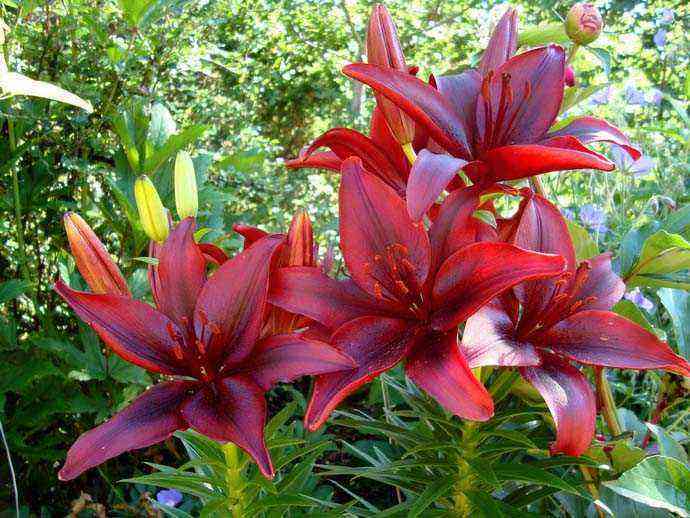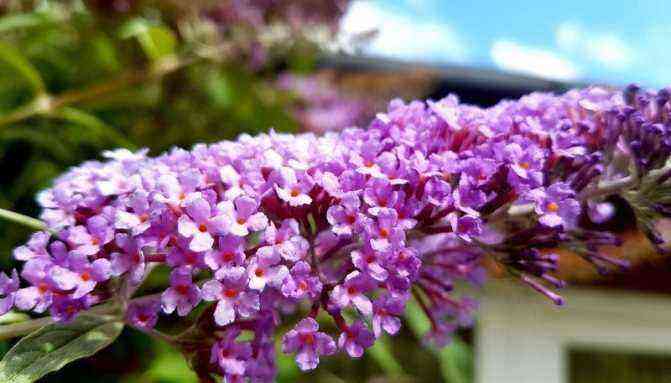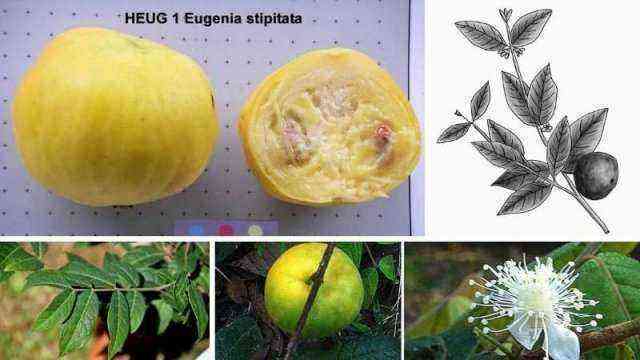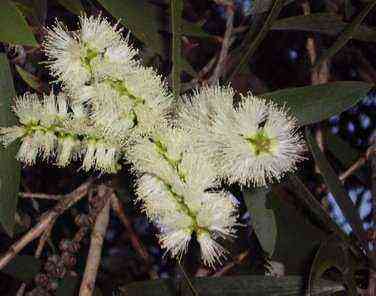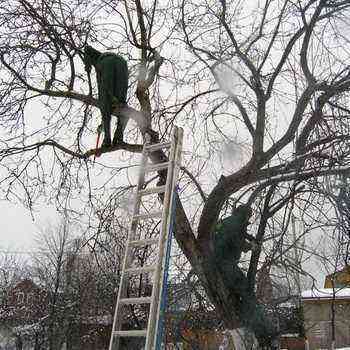
The ancient Greeks called this berry “the shiny horse”. They noticed that the horses that were grazing in the thickets of thorny bushes, eating golden berries, became plump, and their mane and skin began to shine. Therefore, sea buckthorn began to be used as a medicine for sick and emaciated horses. At the same time, the ancient Aesculapius decided that since this berry helps horses, it can also help people, and they began to treat sea buckthorn warriors and athletes.
In Russia, the sea buckthorn plant began to be grown in the St. Petersburg Botanical Garden at the beginning of the 90th century, and in the early XNUMXs, doctors discovered the beneficial properties of sea buckthorn oil. And there was a real “sea buckthorn boom”. In pharmacies, people were registered in the queue to receive this funds, and the consumption of sea buckthorn oil was subject to special accounting. Sea buckthorn oil was in short supply! And in our time, people continue to use the healing properties of sea buckthorn. Many gardeners necessarily plant a couple of bushes on their site.
I must say that the Siberian women do not really like mild winters and frequent thaws. Nevertheless, she confidently moved to the European part of Russia. Breeders have seriously worked on it and have bred all sorts of varieties of different ripening periods. The color of the fruit ranges from light yellow to red-orange. Their shape and size are also not the same. Of course, summer residents are more interested in sea buckthorn, which does not have thorns, with relatively large fruits and longer stalks than usual – this is exactly what makes harvesting easier.
Check out the botanical description of the sea buckthorn plant and learn how to grow it.
What does sea buckthorn look like and how does it grow
It is a strongly branched winter-hardy shrub, less often a tree 2-5 meters high. Shoots end with thorns.
Fruits are small, 0,4-0,5 g, light orange, oval, cylindrical or spherical, 6-10 mm long and 3-7 mm in diameter, with one stone, ripen in August-September. The peel of the fruit is oily. Berries in large quantities strewn the ends of the branches, due to which the plant was called sea buckthorn. They taste sweet and sour, sometimes with a bitter aftertaste, very aromatic. Begins to bear fruit early. At 5-6 years of age, the bushes can give 6-10 kg of fruit.
Sea buckthorn is a light-loving culture. It grows well on sandy soils along the banks of rivers and lakes.
The plant bears fruit for 10–20 years.
Sea buckthorn is widespread in Europe and Asia. On the territory of Russia, it is found in the European part, in Western and Eastern Siberia, Buryatia, in Altai. The plant is bred in gardens, in personal plots. Considering how sea buckthorn grows, it is often planted along river banks to strengthen river beds and sands due to its branched root system.
These photos show what sea buckthorn looks like:
What is the difference between female sea buckthorn and male sea buckthorn?
Sea buckthorn is a dioecious plant: on some bushes there are only female flowers, and on others only male flowers. What is the difference between female sea buckthorn and male sea buckthorn and how do these differences manifest themselves?
The female flowers produce a crop, while the male flowers are required for pollination. Usually one male is planted on five female bushes. The sex of the sea buckthorn can be distinguished when flower buds are laid on the bush. Male specimens differ from female specimens well in the size of fruit buds in the pre-winter state. The buds of male plants are almost 3 times larger than female ones and up to two years of age are located next to two- and three-lobed plants. On bushes with female buds, there are only dicotyledonous buds.
In the 3rd year of life, around the end of August, single three-lobed buds appear – the first harbingers of fruit buds, from which berries are formed the next year. In the 4th year, all dicotyledonous buds become multiparticulate, and this is the end of the plant’s development cycle. Now the female and male bushes are almost indistinguishable. Over time, multi-lobed buds become larger, denser and more prominent.
Sea buckthorn is a very cold-resistant crop, it can withstand frosts down to –40 ° C, but winters with sudden temperature changes are harmful to it. In such conditions, her wood freezes. But most of all, the flower rudiments of male plants suffer, which can die in frosts of -35 ° C. In addition, sea buckthorn is greatly damaged by winter thaws, it wakes up easily even with a slight increase in temperature. The generative buds of sea buckthorn are laid on the growth of the current year, therefore, its yield largely depends on winter weather conditions.
Next, you will find out how sea buckthorn berries are useful for human health.
Health Benefits of Sea Buckthorn and Berry Picking
Berries contain vitamins A, B, E, C, P, K, carbohydrates, P-active substances, sugars, oils. The fruits are used fresh and for processing. The benefits of sea buckthorn berries and its oil are due to their antiscorbutic properties. The oil is used in the treatment of radiation damage to the skin, stomach ulcers.
How to keep sea buckthorn for the winter? Sea buckthorn rubbed with sugar has a short shelf life. You can cook jam, but some of the vitamins will be destroyed under the influence of temperature. During cooking, the content of vitamin C is reduced by almost 4 times. Therefore, the best way to preserve sea buckthorn for the winter is to freeze it! At the same time, the berry does not lose its beneficial properties.
Sea buckthorn oil also has excellent healing properties – it helps to heal wounds and erosion on the mucous membrane. Considering the health benefits of sea buckthorn, its oil is used externally in the treatment of hemorrhoids, stomatitis, cervical erosion and other diseases.
Harvesting sea buckthorn berries is done before frost by smoothening with a wire fork.
In those places where frosts come early, it is much easier to collect sea buckthorn. Frozen fruits are simply shaken off by putting some old blanket or sheet around the tree. The fruits crumble quite easily from shaking the branches. Strong blows to the trunk or branches are considered unacceptable. Where the sea buckthorn ripens before the frost comes, there are problems with harvesting. This means that it is necessary to start such varieties from which the harvest can still be harvested by hand.
The following describes where to plant sea buckthorn so that it develops well and bears fruit actively.
Where to plant sea buckthorn on the site?
Sea buckthorn is considered by many gardeners to be a capricious plant due to the fact that it does not tolerate the close proximity of other species of shrubs and trees, in the first two years after planting it requires the destruction of weeds, in shaded places it bears poorly. Therefore, it is more advisable to plant sea buckthorn along the border of the garden in the form of a hedge.
Sea buckthorn hardly tolerates adverse weather conditions. In the second half of winter, thaws usually occur and sea buckthorn begins to grow. In this regard, the optimal time for planting sea buckthorn is early spring. This is of particular importance when planting seedlings with open roots or when transplanting a plant, when the root system is significantly damaged. If the seedling is in a container, then replanting it is much easier. At the same time, its roots are practically not injured. With timely planting, the sea buckthorn seedling manages to form a strong root system before winter and tolerates winter better.
Where to plant sea buckthorn on a personal plot? Shrubs are planted as far as possible from the treated part of the garden. Suitable for this place on the edge of the site, close to summer cottages, next to the road or lawn.
The root system of this plant extends to the sides for many meters. The number of roots is small. In this case, the roots in the ground are located superficially (at a depth of 20 – 30 cm). When digging up the soil, it is easy to damage them, which immediately affects the condition of the plant. This explains the need for remote planting of sea buckthorn.
Sea buckthorn does not want the soil to be deeply dug around it – it reacts painfully to damage to the roots, which are located close to the surface, moreover, horizontally, and go far beyond the projection of the crown. The soil under these trees is loosened often, but finely (up to 5–7 cm) so as not to damage the roots.
Sea buckthorn is a light-loving plant, so it should be planted in an open area.
In the next section of the article, you will learn how to properly plant sea buckthorn in the garden.
How to properly plant and grow sea buckthorn
In general, planting and caring for sea buckthorn is similar to planting and caring for other fruit trees and shrubs. When planting, you should not abuse mineral and fresh organic fertilizers.
In order to plant and grow sea buckthorn as required by proper agricultural technology, planting holes of 60 x 40 cm are dug for seedlings in the fall, with the upper, more fertile soil layer folded in one direction, and the lower one in the other. In early May, as soon as the weather is warm, sea buckthorn is planted. To grow sea buckthorn as strong as possible, the top layer of soil must be mixed with a mixture of organic and mineral fertilizers: for each square meter, 10 kg of humus or rotted manure, 0,5 kg of lime, 50 g of superphosphate are required. At the bottom of the planting pit, you need to hammer a stake, after which the pit should be covered by a third with the prepared soil mixture and compacted. A seedling is placed on the north side of the stake, the roots are covered with earth, and the seedling itself is tied to the stake. The trunk circle is trampled down. The root collar of the plant is immersed in the soil 5 – 7 cm, which leads to the formation of additional roots. Then the plant is watered abundantly (2 buckets per hole). The trunk circle is sprinkled with sawdust or peat. The plant needs to be watered periodically – once every three days before the shoots start growing.
When transplanting sea buckthorn from one place to another, you need to dig out as many of its roots as possible. This is not easy to do as they are very long. If the root system had to be cut significantly when digging up the plant, then the same should be done with the ground part of the plant. In this case, the plant will only benefit from it. When transplanting large plants, you can remove all lateral branches and leave only a trunk 1 – 1,5 m long.It is enough to add a bucket of ready-made compost, a handful of superphosphate and a glass of wood ash to each planting pit. If the soil in the area is prone to acidification, then double superphosphate should be used.
Sea buckthorn roots grow rapidly and go far beyond the planting pit. In this regard, already after 1 – 2 years after planting, the introduction of fertilizer into the trunk circle does not make sense.
In its homeland, sea buckthorn grows along the banks of rivers and streams, adores running water and cannot stand stagnant, swampy water. Nodules grow on the roots of sea buckthorn, and the bacteria living in them assimilate nitrogen from the air. In this regard, sea buckthorn is similar to a legume plant. This means that she supplies herself with nitrogen, and phosphorus, potassium and sulfur must be given to her with top dressing. But solutions of mineral fertilizers for it should be weaker than for other garden and vegetable crops, and water for irrigation needs clean water.
How to care for sea buckthorn: proper watering
When caring for sea buckthorn, remember that it is a moisture-loving plant that reacts sharply to a lack of moisture due to superficially located active roots. With a lack of watering, sea buckthorn develops poorly and bears fruit worse, it can shed fruits and leaves prematurely. Timely soil moisture has a positive effect on productivity, the berries ripen larger. But excessive watering and stagnation of water in the soil lead to a deterioration in the quality of the berries. Rare and abundant watering is optimal for sea buckthorn.
During care when growing sea buckthorn, young bushes are watered once every one to two weeks at the rate of 20-30 liters per 1 m2 of nutritious area.
Sea buckthorn needs seasonal watering throughout the summer season (from the moment the buds open to the beginning of leaf fall), but especially in July and early August, when the fruits ripen. Watering is also important during the active growth of shoots and during the formation of fruit buds, from which the next year’s harvest will appear. Adult plants are watered on average every week (in the absence of precipitation) at the rate of 25–50 liters per 1 m2 of nutrient area (or 50–120 liters per plant). The lighter the soil, the more frequent and less abundant watering is required for sea buckthorn. Plants are watered at the root, no more than 2,5 m from the trunk (otherwise the sea buckthorn will grow abundantly in breadth). The soil is saturated with moisture to a depth of 60 cm. To care for the sea buckthorn as thoroughly as possible, sprinkling is sometimes used. After each watering, the soil in the near-stem circle is carefully loosened, trying not to damage the roots (a deepening of 5 cm is permissible). The first watering of sea buckthorn is carried out after awakening the buds, this spring watering is especially important when the snow melts early or after a winter with little snow. Simultaneously with the first watering, sea buckthorn is fed with complex fertilizer. Spring watering is carried out at the rate of 60–75 liters of water per plant. In summer, sea buckthorn is watered at least two to three times.
In dry and warm autumn weather, in October or early November, a subwinter water-charging watering of sea buckthorn is carried out at the rate of 30-50 liters of water per 1 m2 of nutrient area for young plants and 70-100 liters per 1 m2 for fruiting specimens (up to 150 liters per plant) …
As you can see, it is not so easy to grow sea buckthorn in the country, but the result is worth it!
Soil for planting and caring for sea buckthorn in the open field
Sea buckthorn is quite unpretentious in relation to the choice of soil; in the wild, it can grow even on poor sandy and washed-out lands. She needs well aerated and permeable soils, but at the same time they must be sufficiently moist.
For planting and growing sea buckthorn, there should be no stagnant water in the soil, so wetlands are not for it. It is advisable to choose a site for planting where the groundwater is no closer than 1 m from the soil surface.
Sea buckthorn practically does not grow on heavy clay lands and peat bogs. It can grow on heavy loamy soils, but you should not expect a good harvest from it in such conditions.
Fertile soils are optimal for sea buckthorn: light sandy loam, heavy sandy loam with a light texture or medium loam. If necessary, the heavy loam can be slightly improved before planting to make it more breathable. To do this, you need to mix the top layer of heavy loam with coarse river sand and humus or peat in approximately equal proportions.
For planting and caring for sea buckthorn in the open ground, the level of soil acidity is important: it does not grow on acidic soils, here it is quickly suppressed and dies. Sea buckthorn is more suitable for slightly acidic soils with a pH of 5-6 or neutral. The ideal acidity for it is pH 6,5–7. Therefore, if your site has acidic soils, they will have to be limed with slaked lime at the rate of 400–600 g per 1 m2.
Next, you will find out which sea buckthorn is better to plant on the site in order to get a good harvest.
What sea buckthorn is better to plant on the site?
For planting, it is advisable to take one-year-old seedlings of zoned varieties about 40 cm tall. If part of the roots of the transplanted seedling has suffered, then the upper aerial part should be cut off strongly – this way the plant will take root more easily.
The roots of the seedlings are very sensitive to drying out, so the plants should be planted immediately after purchase, the damaged roots should be cut off. In addition, planting material cannot be kept in cellophane bags for a long time – waterlogged roots rot.
When ordering seedlings, do not forget that sea buckthorn is a dioecious plant and both female (fruiting) and male non-fertile plants are needed to obtain fruits. Therefore, write out male copies as well. At the same time, for 5-6 female plants, one male is enough, planted on the side from which the wind is blowing, so that the pollen is transferred to female trees. On two plots in a collective garden when seabuckthorn trees are planted in parallel rows, one male specimen is enough for 8-10 female ones.
When growing sea buckthorn on acidic Ural podzolic soils, it should be borne in mind that this is a calcareous soil-loving plant. Therefore, stale (carbonized) lime should be introduced into the planting pit, 0,5-XNUMX kg, and then moderate liming of the trunks should be carried out. When transplanting sea buckthorn, keep in mind that the growths on its roots are not “cancerous tumors”, but useful formations through which the plant absorbs nitrogen from the air. Therefore, keep these “nodules”.
How to care for sea buckthorn: pruning bushes (with video)
The crown of the sea buckthorn is pruned in such a way that a bush is formed, the height of the stem of which would be at least 20 cm. Soon after planting, single-stem seedlings are slightly shortened. This is done to obtain branches in the lower part of the trunk.
The next year, shading and excess branches are cut, long and thin ones are shortened. Do not remove thick branches – this will significantly weaken the plant.
Sea buckthorn tolerates pruning well. She is most productive at the age of 8 – 12 years. After this period, it is recommended to cut the plant down and it will quickly recover from the undergrowth coming from the stump.
Types and best varieties of sea buckthorn: photo and description
Sea buckthorn comes in a wide variety of species, which sometimes grow in very unusual places in the wild, settle along the banks of reservoirs, in valleys and on rocks. In Russia, for the most part, sea buckthorn grows – this is a small tree, and most often a shrub with beautiful silvery foliage and sharp thorns at the ends of branches.
Tin-like sea buckthorn is a small, very thorny dioecious tree or shrub up to 5 (6) m in height, with numerous branches covered with thorns, alternate silvery linear leaves and inconspicuous greenish flowers. The fruits are juicy orange-red drupes, sweet and sour, with a pineapple flavor, densely sticking to the ends of the branches. The fruits ripen in September – October. It reproduces mainly vegetatively. Recently, it has been widely planted in gardens and in personal plots.
Of the varieties, the most recognized are:
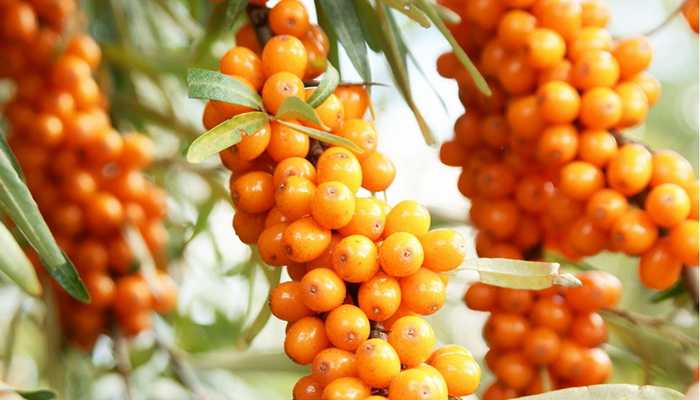
Chui
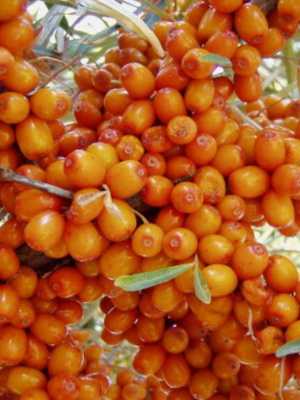
Plentiful
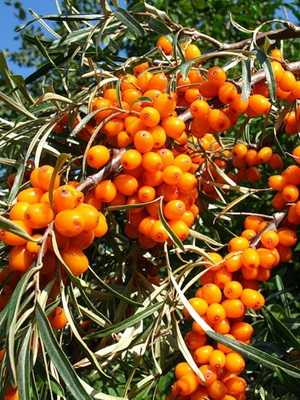
Orange
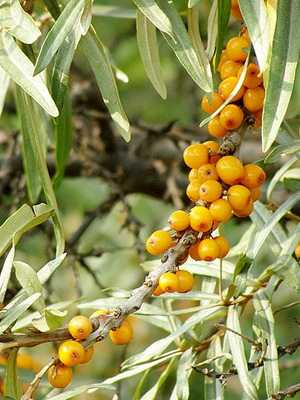
Oilseed
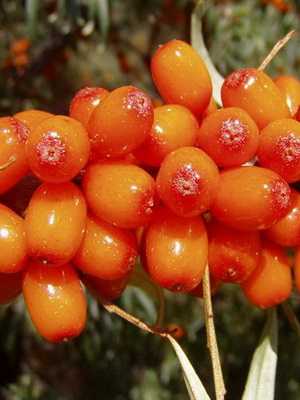
Giant
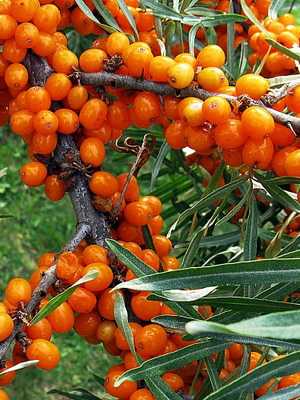
Gift of Katun
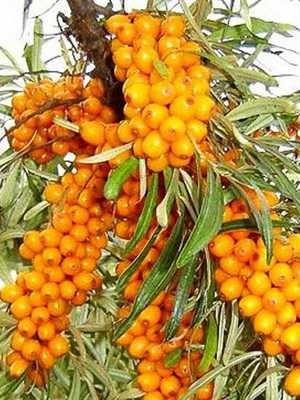
Ear of gold
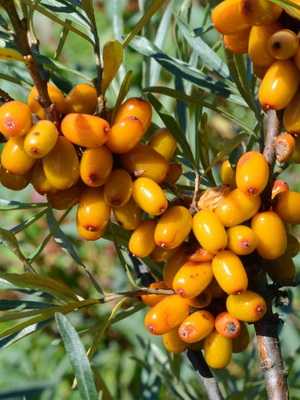
Altai news
The following is a description of the best varieties of sea buckthorn.
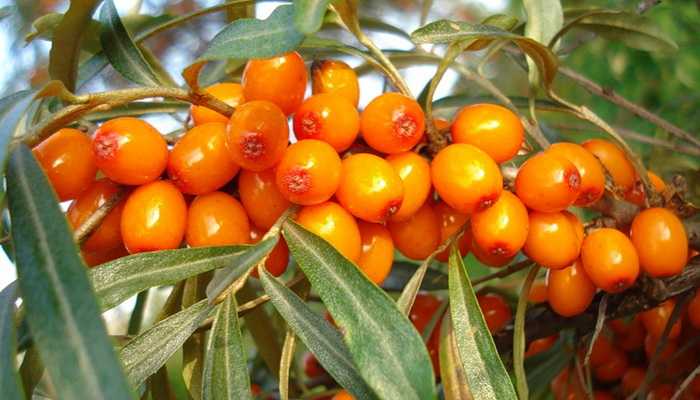
Botanical – a productive variety: up to 25 kg of berries can be harvested from one bush. The bush is medium-sized, the branches are thornless. The berries are large, round-elongated, light orange in color. The pulp is sour, slightly aromatic.
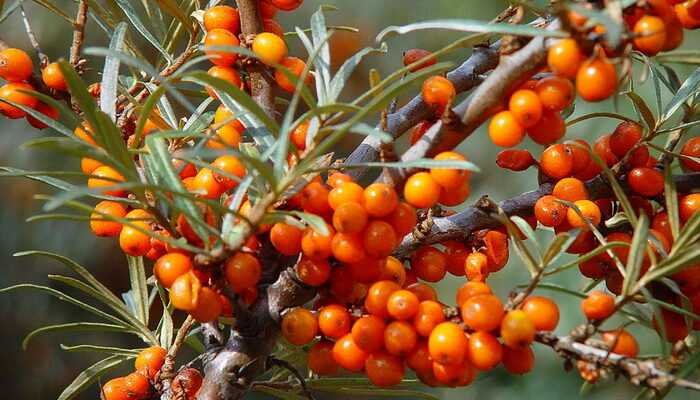
Galerit – a productive variety. The bush is weak, slightly spreading, the crown is spreading, compact. Shoots are small, arched. The berries are large, round-elongated, light orange in color, with a red spot at the base.
The scales are light brown, the skin is dense, glossy. The flesh of this variety of sea buckthorn is juicy, tender, sweet and sour in taste. The berries ripen in mid-September.
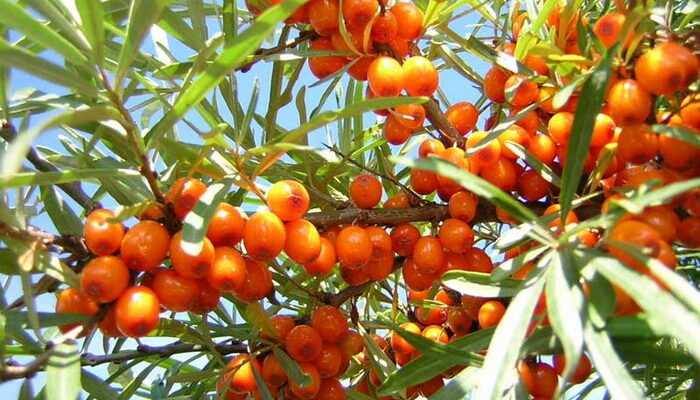
Augustine – a productive variety, average winter hardiness. The bush is medium-sized, medium-spreading, with an umbrella-shaped crown.
The berries are medium, oval, light orange in color, with a red spot at the base. The pulp is juicy, sour, aromatic. The berries ripen in mid-August.
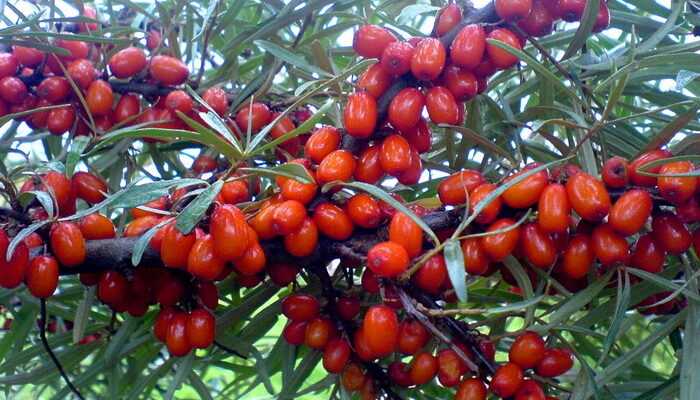
Rowan – an old variety. The bush is tree-like, the crown is narrow-pyramidal, the branches are thornless.
Fruits are large, dark red, thin, shiny skin. The pulp is tender, bitter, aromatic. Outwardly and in taste, they resemble rowan fruits. Berries of this variety contain a large amount of carotene.

Nivelena – high-yielding (up to 30 kg of berries from each bush) variety. There are single thorns in the upper part of the shoot.
The berries are oval in shape, on a thin stalk, orange in color. The pulp is juicy, sweet and sour, aromatic.
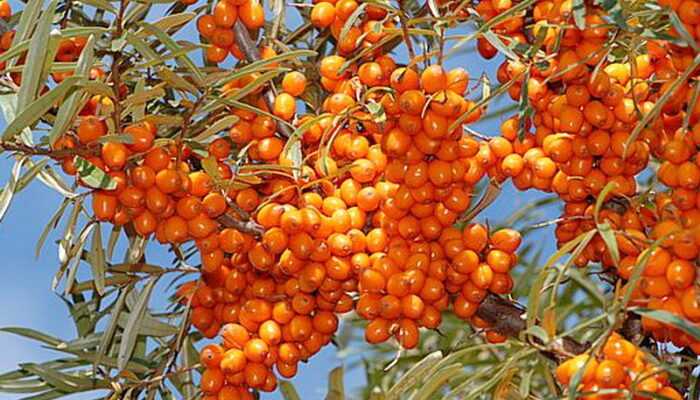
Amber – medium spreading bush, branches without thorns. The berries are orange, cylindrical in shape. The pulp is juicy, sweet and sour, slightly aromatic. The berries ripen at the end of August.
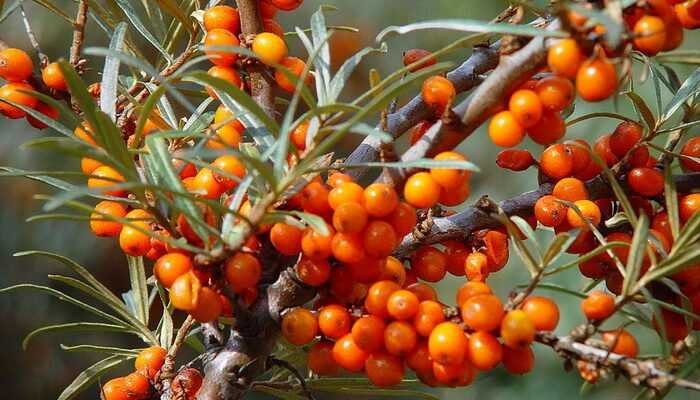
Vorobievskaya – medium-sized bush, umbrella-shaped crown. Slightly thorny shoots, with spines at the top.
The berries are large, outwardly similar to dogwood. The color is orange-red, with a red spot visible at the top. Advantages of the variety: winter hardiness, transportability.
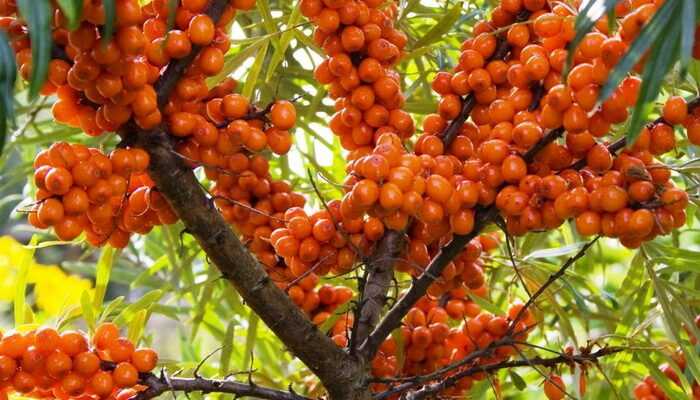
Krasnokarminnaya – mid-season fruitful winter-hardy variety. The bush is medium-sized, the crown is medium-spreading. Shoots are thick, straight.
The berries are large, red in color, with luminous scales. They are oblong in shape, truncated from above and elongated towards the stalks. The skin is dense, shiny. The berries ripen in mid-August. Advantages of the variety: transportability, keeping quality in a cool room.

Chui – mid-season fruitful winter-hardy variety. The bush is medium spreading, the branches are weakly prickly. The berries are large, oval-cylindrical, orange in color. The pulp is dense, sweet and sour taste. The berries ripen in early August.
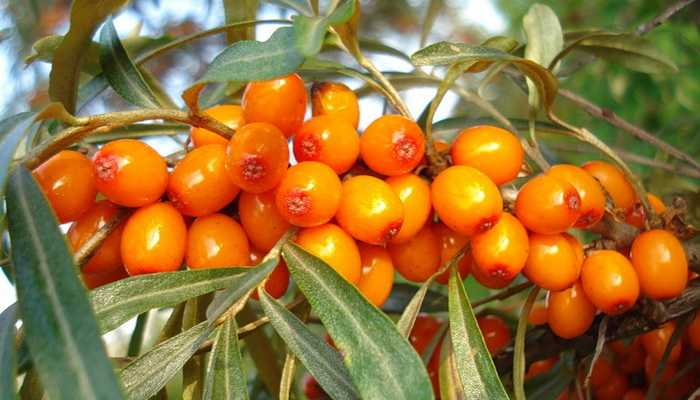
Botanical amateur. Winter-hardy high-yielding variety of medium early ripening (first half of August).
Medium height, slightly spreading, compact tree, almost without thorns, comes into full fruiting 3-4 years after planting. The berries are large, yellow-orange in color, oval-cylindrical, with a small amount of scales. The berries are universal and have a pleasant pineapple aroma. The variety is resistant to pests, as well as to tracheomycotic drying out.
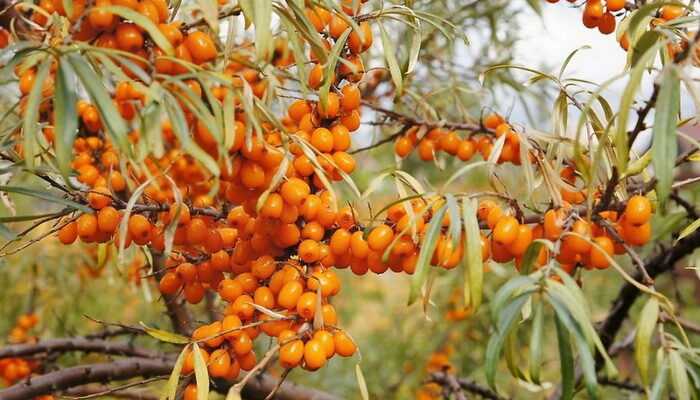
Pepper. A winter-hardy variety with a medium early ripening period – the first half of August.
The plant looks like a low compact bush with a small number of thorns. The shoots are arched, so the crown of the bush looks like an umbrella. Productivity at an average level, begins to bear fruit in the 3-4th year of life.
As you can see in the photo, the berries of this sea buckthorn variety are large, orange-red, oblong-conical in shape:

Nugget. A frost-resistant medium-early ripening variety, the berries ripen in the second half of August.
The variety looks like a medium-sized tree or bush of medium density with a few thorns. Begins to bear fruit early, the yield is increased. Berries are large, oval, orange, universal.
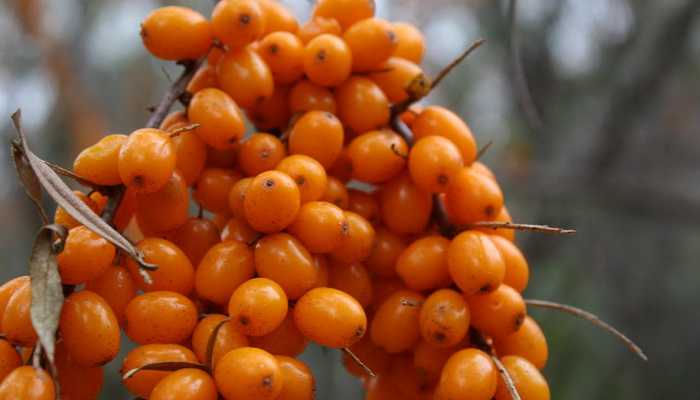
Moscow pineapple. Medium-yielding variety with medium late ripening.
The bush is medium-sized, somewhat spreading, with straight shoots almost without thorns, begins to bear fruit in the 3-4th year of life. The variety is resistant to pests and diseases. The berries are fragrant, sweet and sour, medium-sized, pear-shaped, bright orange with a red tint at the base and at the top, universal.

The Moscow beauty. Winter-hardy, but low-yielding variety of medium late ripening.
The tree is medium-sized, somewhat spreading, with a small number of thorns, begins to bear fruit in the 3-4th year of life. The variety is resistant to pests and diseases. Pineapple-flavored berries, medium size, oval-round, bright orange with a red tan at the base and at the top.
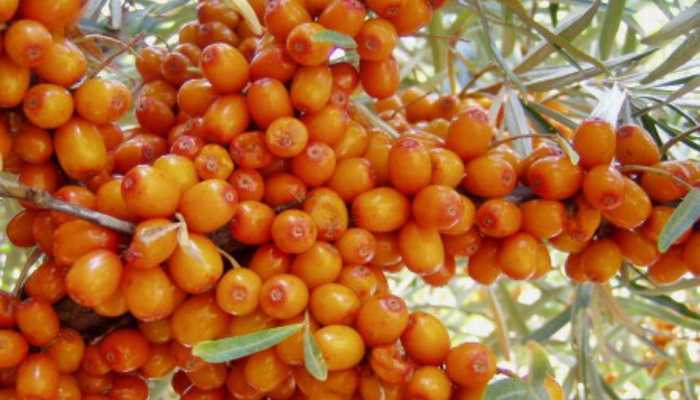
Abundant. Winter-hardy high-yielding variety of medium late ripening – end of August. The variety looks like a tree or a vigorous bush with a fairly spreading crown and a small number of thorns.
The variety is resistant to pests and diseases. The plant begins to bear fruit in the 3-4th year of life. The berries of this one of the best varieties of sea buckthorn are bright orange, large, cylindrical, universal.
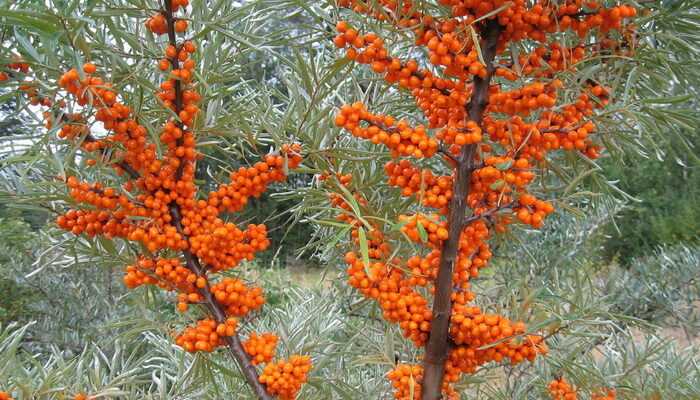
Pleasing. Variety with high yield and very high winter hardiness, medium late ripening (second half of August). The variety is quite resistant to pests and diseases.
A tree with a broadly spreading crown, almost without thorns, begins to bear fruit in the 3-5th year of life. The berries are red-orange, medium and large, rounded, slightly elongated towards the stalk.

Giant. Medium-yielding variety with increased winter hardiness of late ripening. A tree or bush up to 2,5–3,5 m tall, with a rounded-conical crown, almost without thorns on the shoots.
The variety is resistant to pests and diseases. It comes into full fruiting in the 4-5th year after planting. The berries are large, orange, universal and cylindrical in shape, ripen in early to mid-September.
The next section of the article is devoted to how to breed sea buckthorn on the site.
How to grow sea buckthorn in the country: propagation by cuttings
Reproduction of sea buckthorn is done by green cuttings, grafting and root shoots.
Cuttings are planted in summer in tall boxes with sand and a small layer of soil at the bottom of the box. The boxes are closed with glass and the plants are often sprayed with water from a spray bottle. Better yet, they take root in greenhouses with artificial water fog.
For the reproduction of sea buckthorn, the lower half of the cuttings is cleared of leaves. Rooting is facilitated by keeping the cuttings (the bare part is immersed) in a solution of heteroauxin (200 mg per liter of water) for 6 hours.
Some sea buckthorn bushes, with good soil cultivation and watering, give offspring, which reproduce the mother plant in terms of fruit quality. You can propagate sea buckthorn and grafting varietal plants with cuttings on ordinary seedlings.
Sowing sea buckthorn seeds is interesting in two cases. Firstly, if you received the seeds of a large-fruited varietal sea buckthorn, then work on its further cultivation. And, secondly, when domesticating seedlings of small-fruited red sea buckthorns, which have a pleasant fruit taste.
However, the seed propagation of sea buckthorn is especially important when obtaining the most winter-hardy forms for the northern regions of the Urals. In this case, it is necessary to use the sea buckthorn seeds of the Sayan (Yenisei River basin) and Transbaikal (Selenga River basin).
Myths and truths about sea buckthorn
Mythology
Sea buckthorn helps to cure myopia.
Sea buckthorn contains beta-carotene and vitamin A, known for its beneficial effects on eyesight. It strengthens the retina, helps prevent night blindness, but does not affect myopia.
Sea buckthorn oil helps with burns.
This is one of the most common myths – a burn cannot be smeared with any oil. The oil creates a film on the burn, the wound does not “breathe”, and microbes form on it.
Sea buckthorn helps to lose weight.
Sea buckthorn contains omega-7 fatty acids that regulate fat metabolism. This substance prevents the accumulation of fat mass, but does not lead to weight loss.
Sea buckthorn worsens the condition of blood vessels.
Sea buckthorn contains rutin, which strengthens the walls of blood vessels.
Sea buckthorn can cause constipation.
Sea buckthorn contains dietary fiber that improves intestinal motility. And sea buckthorn oil has a laxative effect.
True
Sea buckthorn is effective for the prevention of vitiligo disease.
The coumarins contained in sea buckthorn fruits increase the photosensitivity of the pigment, which is important in the treatment of leukoderma (vitiligo disease is the formation of large spots of discolored, white skin on the neck, arms and other places).
Sea buckthorn is useful for the prevention of atherosclerosis.
Dietary fibers contained in sea buckthorn remove harmful cholesterol from the body and protect blood vessels from atherosclerotic plaques. Sea buckthorn also contains beta-sitosterol, which lowers blood cholesterol levels.
Sea buckthorn improves mood.
Sea buckthorn contains serotonin, which is also produced in the human brain and is responsible for feelings of pleasure.
Sea buckthorn prolongs the youthfulness of the skin.
Sea buckthorn is rich in vitamin A and beta-carotene, which improve the regeneration of skin cells. Also, sea buckthorn contains more than two daily requirements of vitamin C, which improves the synthesis of collagen, which makes our skin elastic.
Sea buckthorn helps to recover faster from colds.
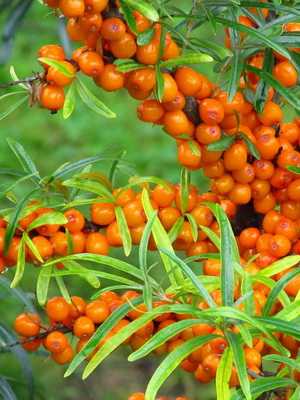
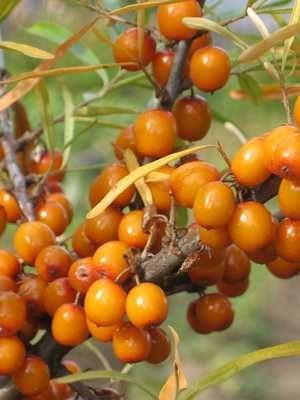
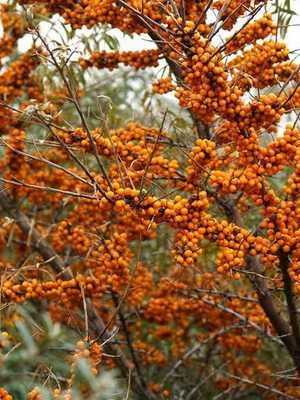
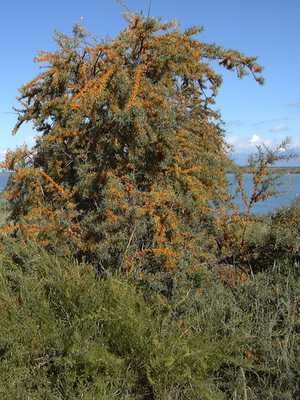
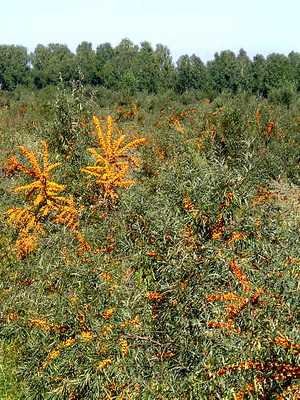



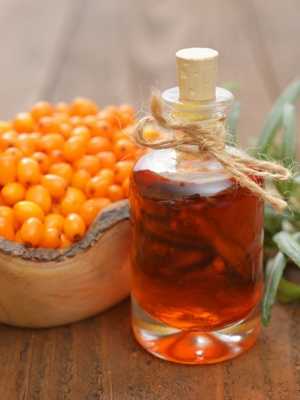

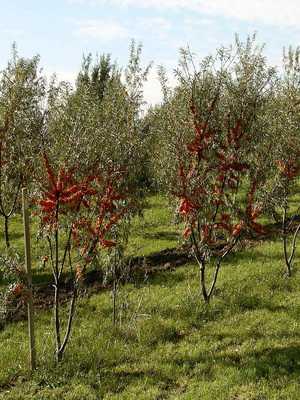
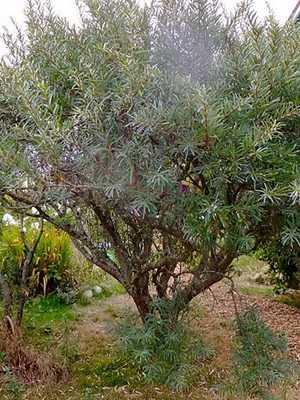

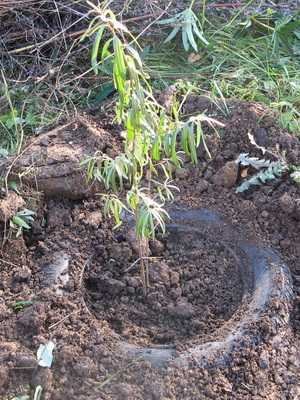

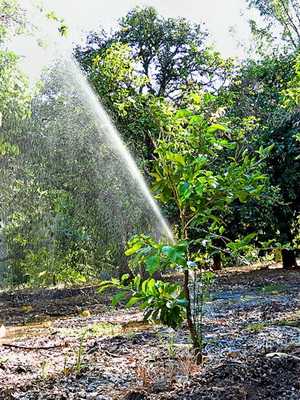
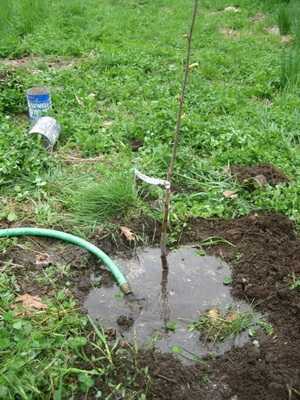


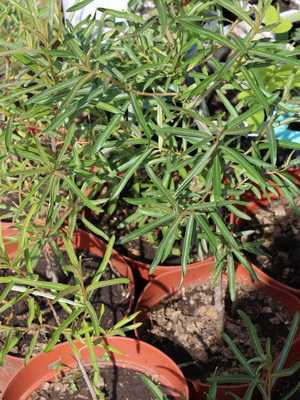
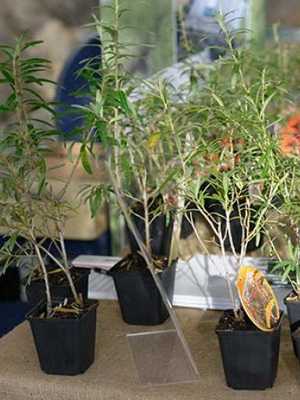
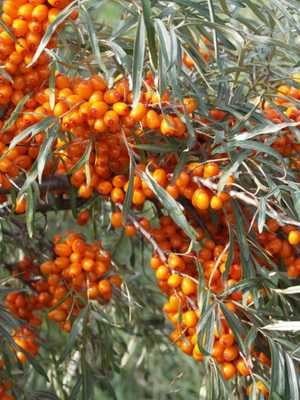
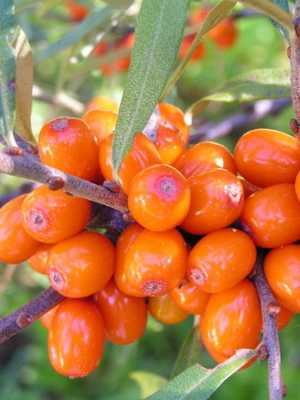
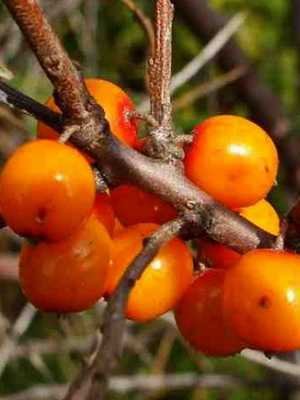
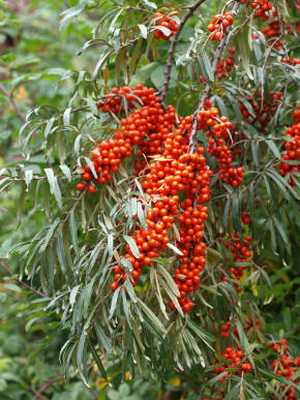
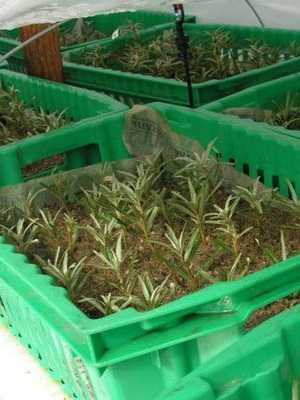
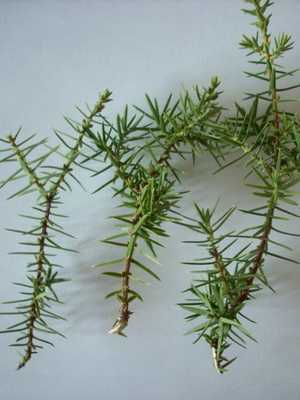
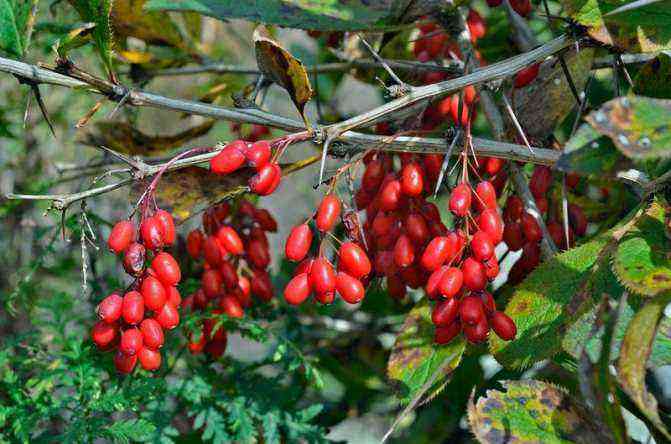
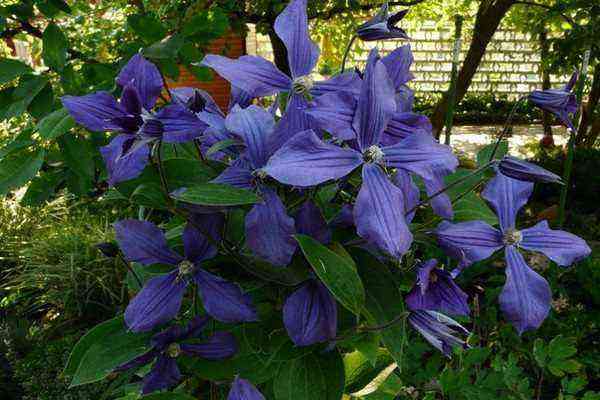
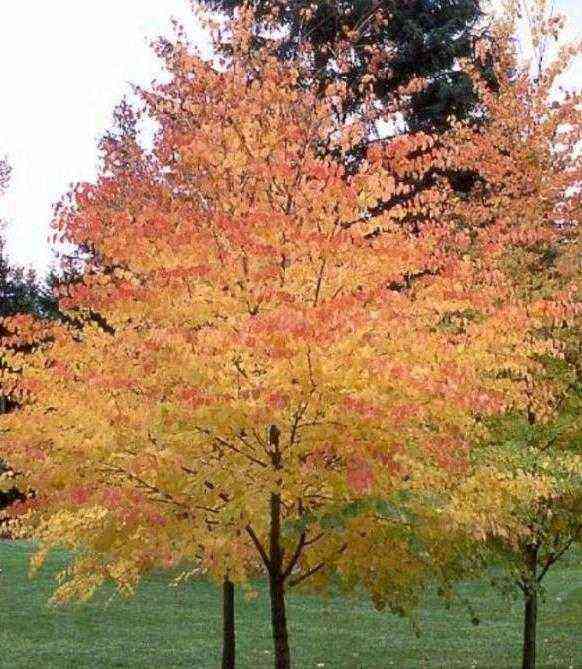
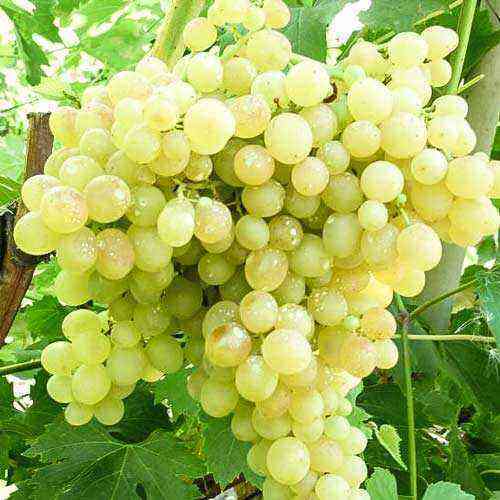
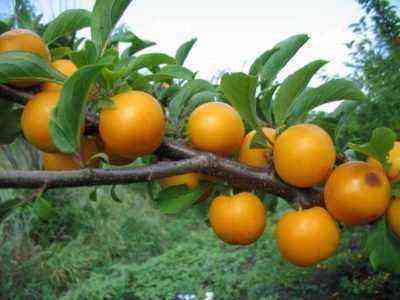

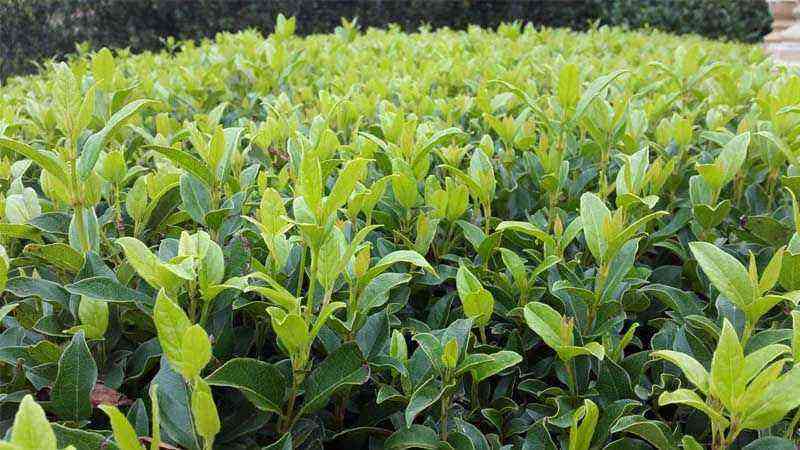
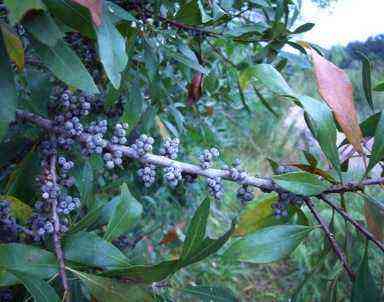


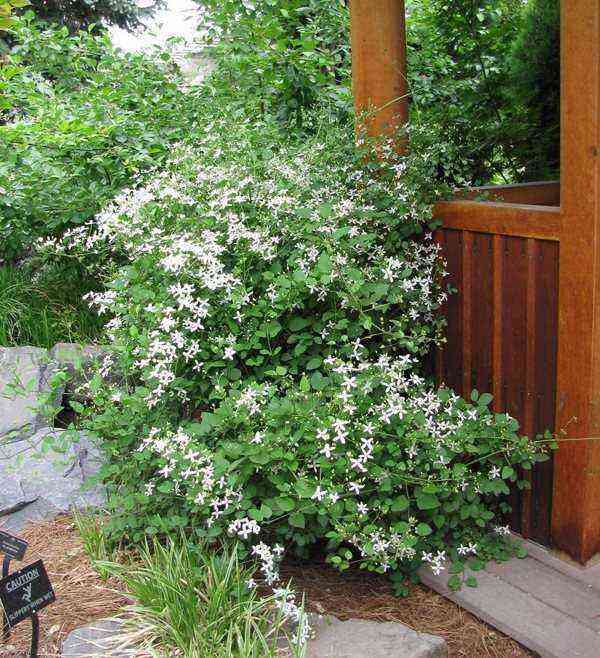
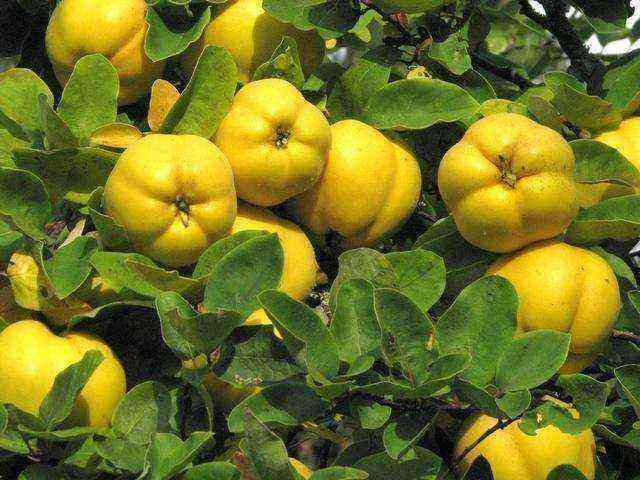
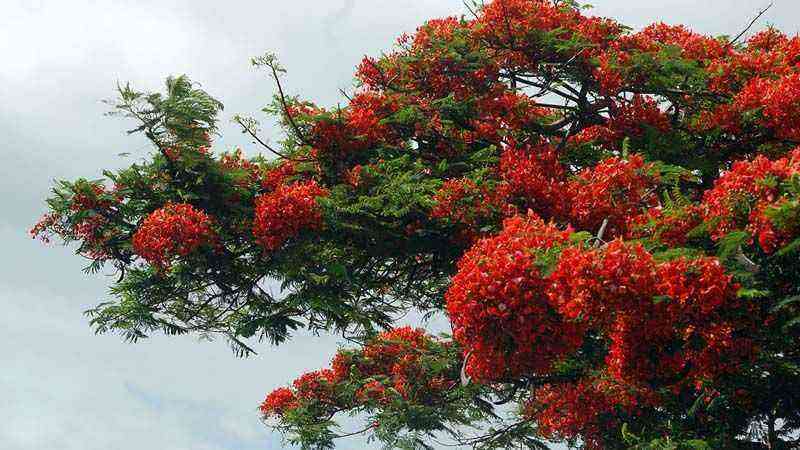

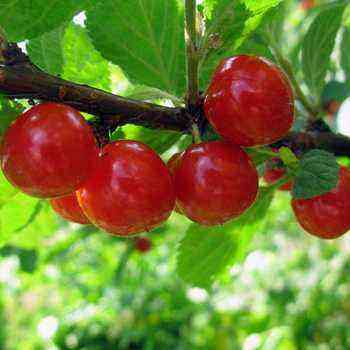

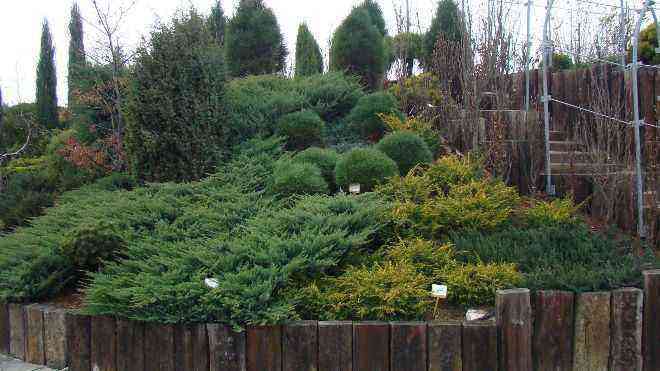
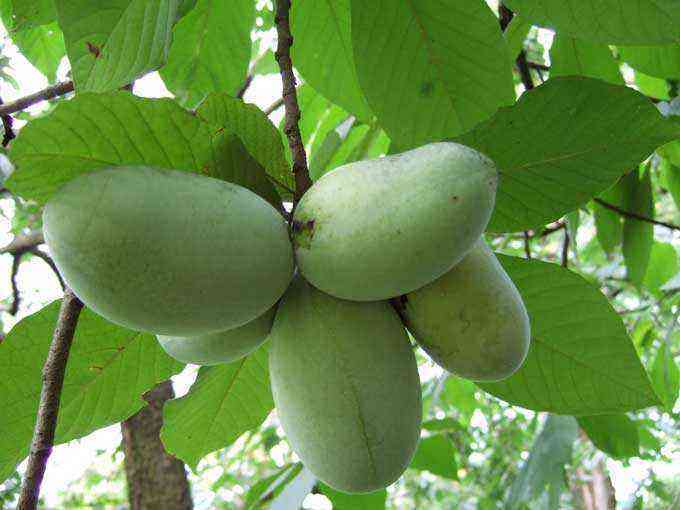
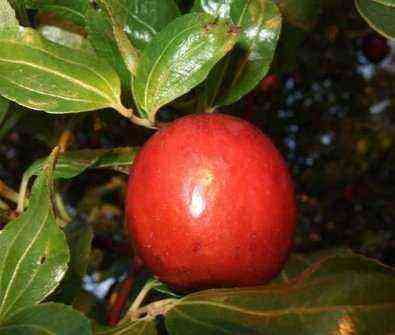
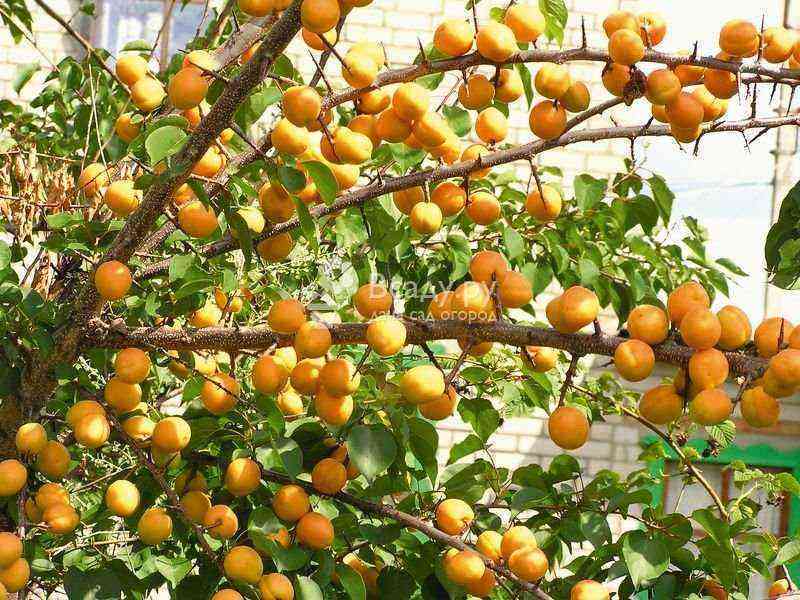



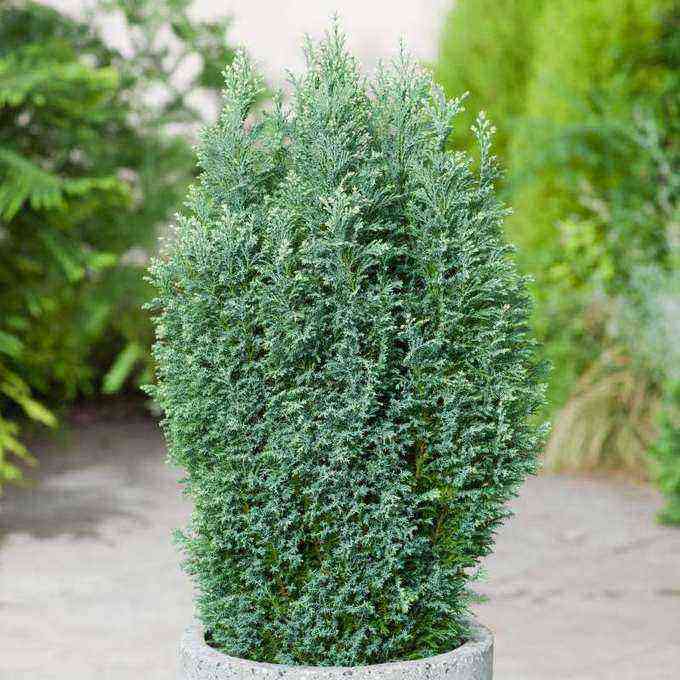
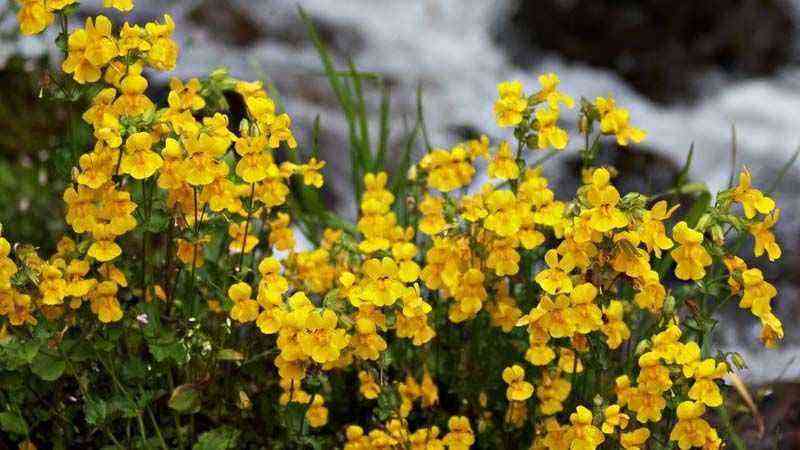
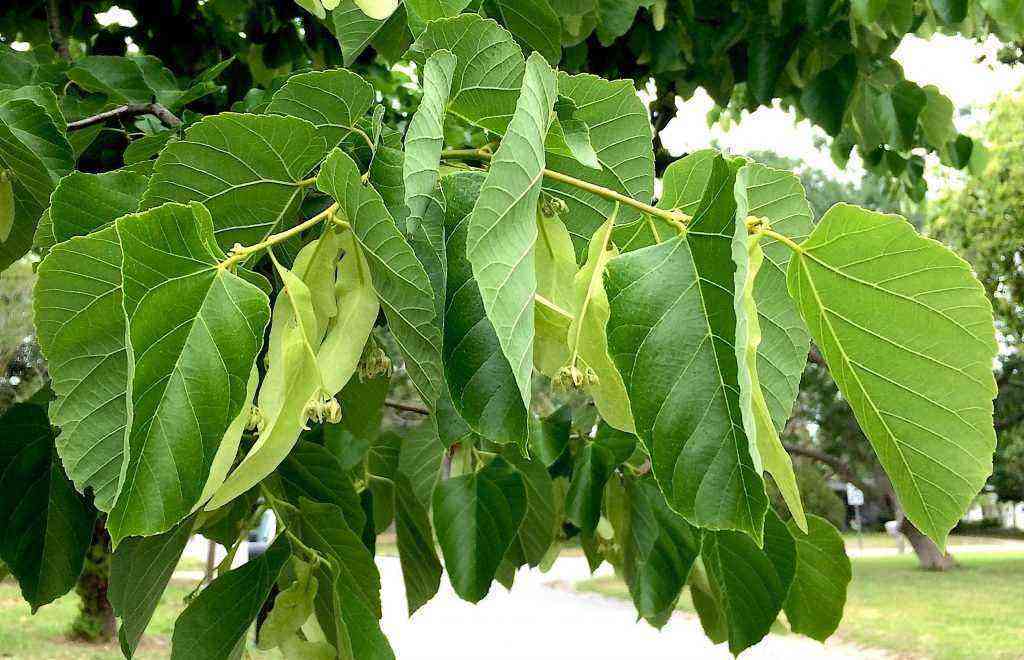
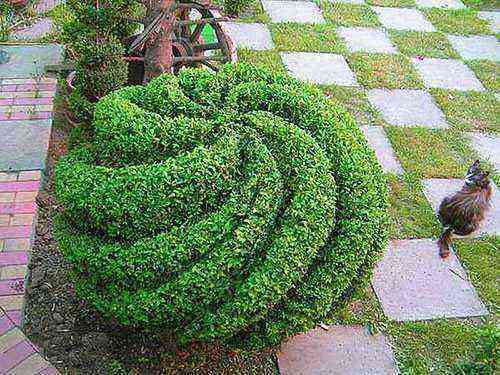

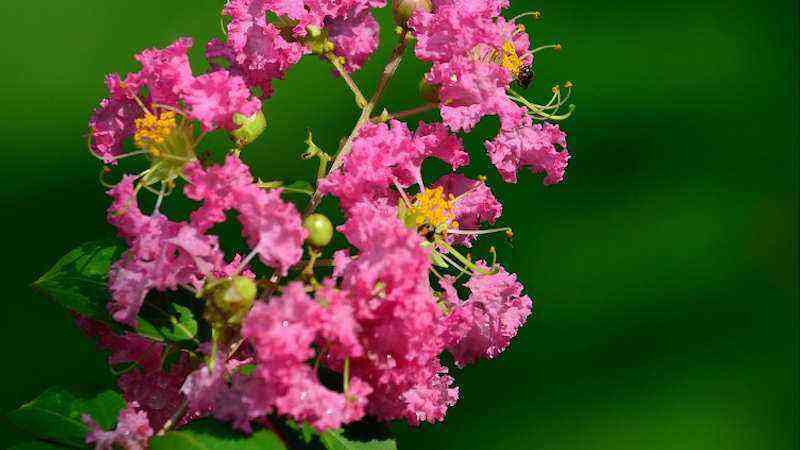
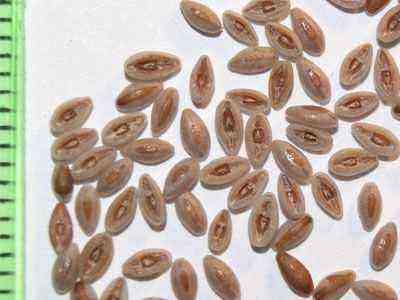
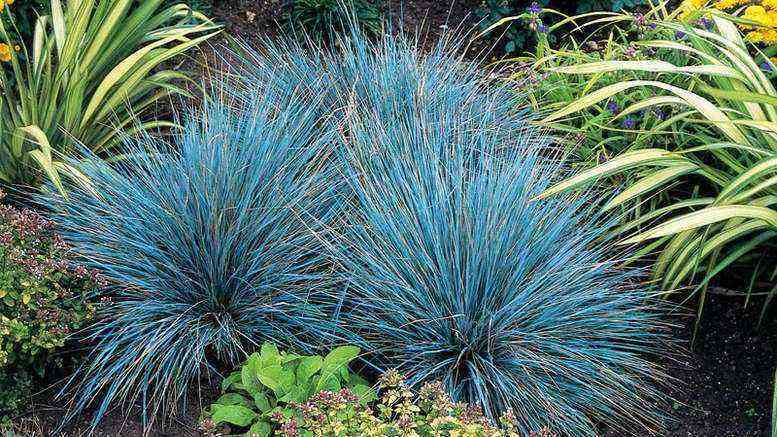
![Cultivation of Manihot esculenta [Cassava, Cassava] Cultivation of Manihot esculenta [Cassava, Cassava]](https://farmer-online.com/wp-content/uploads/2021/05/Cultivation-of-Manihot-esculenta-Cassava-Cassava.jpg)
